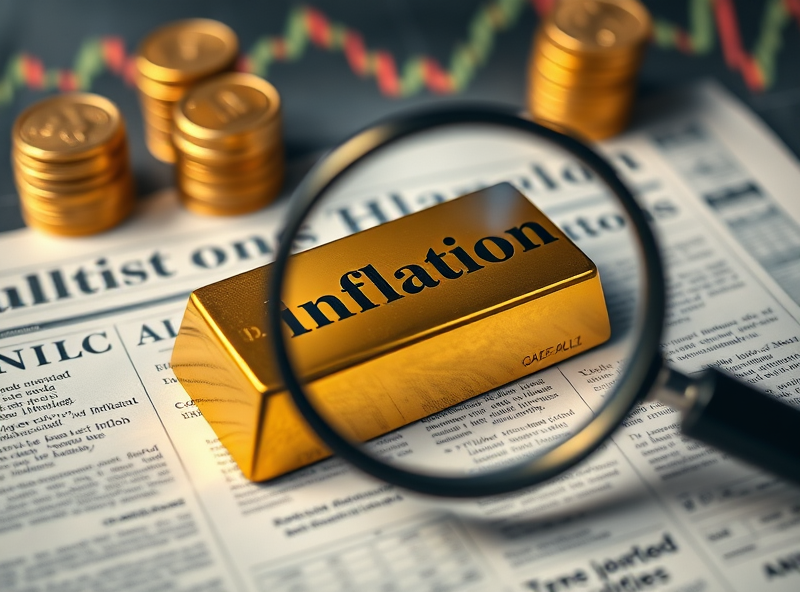The Role of Gold as an Inflation Hedge

Gold has long been considered a reliable hedge against inflation, and for good reason. When inflation rises, the purchasing power of fiat currencies tends to decline, eroding the value of cash savings. However, gold often retains its value or even appreciates during such times, making it a popular choice for investors looking to preserve their wealth. This is because gold is a tangible asset with intrinsic value, unlike paper money, which can be printed in unlimited quantities. Additionally, gold is not tied to any specific country’s economy, making it a globally recognized store of value. By including gold in your investment portfolio, you can diversify your assets and potentially mitigate the risks associated with inflation. While it’s important to remember that gold prices can fluctuate in the short term, its long-term track record as a stable store of value makes it a prudent choice for those concerned about inflationary pressures.
Why Central Banks Favor Gold as a Safe Asset

Gold has long been considered a cornerstone of financial stability, and central banks around the world have consistently favored it as a safe asset. But why is this precious metal so highly regarded? One key reason is its intrinsic value and historical significance. Unlike fiat currencies, which can be printed in unlimited quantities, gold is finite and cannot be artificially created. This scarcity makes it a reliable store of value, especially during times of economic uncertainty or inflation.
Central banks also appreciate gold’s role as a hedge against currency fluctuations. When the value of a nation’s currency weakens, gold often retains or even increases its value, providing a safeguard for a country’s reserves. Additionally, gold is not tied to the creditworthiness of any single government or institution, making it a neutral and globally accepted asset.
In recent years, central banks have been increasing their gold reserves as a way to diversify away from the U.S. dollar and other major currencies. This strategy not only reduces reliance on a single currency but also strengthens a nation’s financial resilience. For individuals, understanding why central banks trust gold can offer valuable insights into how to protect personal wealth in uncertain times. By adding gold to your investment portfolio, you can mirror the strategies of these financial institutions and potentially safeguard your assets against inflation and market volatility.
Key Limitations of Gold Investment

Gold has long been considered a safe haven and a reliable hedge against inflation. However, like any investment, it comes with its own set of limitations that investors should carefully consider. One major drawback is that gold does not generate any income. Unlike stocks that pay dividends or real estate that provides rental income, gold simply sits idle in your portfolio. This can make it less appealing for those looking for regular cash flow.
Another limitation is storage and security. Physical gold requires secure storage, whether in a safe at home or a bank vault, which can add to your costs. Additionally, there’s always the risk of theft or loss.
Gold prices can also be volatile in the short term. While it may be a stable store of value over the long term, its price can fluctuate significantly due to market sentiment, geopolitical events, or changes in currency values. This volatility can make it a risky choice for short-term investors.
Lastly, gold’s value is largely speculative. Unlike a business or property that can grow in value through productivity or development, gold’s worth is determined by market demand. This means that if demand decreases, the value of your investment could drop significantly.
Understanding these limitations can help you make a more informed decision about whether gold is the right investment for your financial goals.
2025 Price Predictions and Strategic Advice

Gold has long been considered a safe haven for investors, especially during times of economic uncertainty. As we look toward 2025, many experts predict that gold prices may continue to rise due to ongoing inflationary pressures, geopolitical tensions, and increasing demand from both central banks and individual investors. While it’s impossible to predict exact prices, analysts suggest that gold could reach new highs if global economic instability persists.
For those considering gold investment, here are some strategic tips:
1. **Diversify Your Portfolio**: Don’t put all your resources into gold. Use it as a hedge against inflation while maintaining a balanced portfolio with stocks, bonds, and other assets.
2. **Consider Different Forms of Gold**: Physical gold (like coins and bars), gold ETFs, and mining stocks each have their pros and cons. Choose based on your investment goals and risk tolerance.
3. **Monitor Economic Indicators**: Keep an eye on inflation rates, interest rates, and currency fluctuations, as these factors heavily influence gold prices.
4. **Invest for the Long Term**: Gold is best suited for long-term investors who want to preserve wealth rather than seek quick profits.
By staying informed and adopting a strategic approach, you can make the most of gold’s potential as a reliable investment in the coming years.



